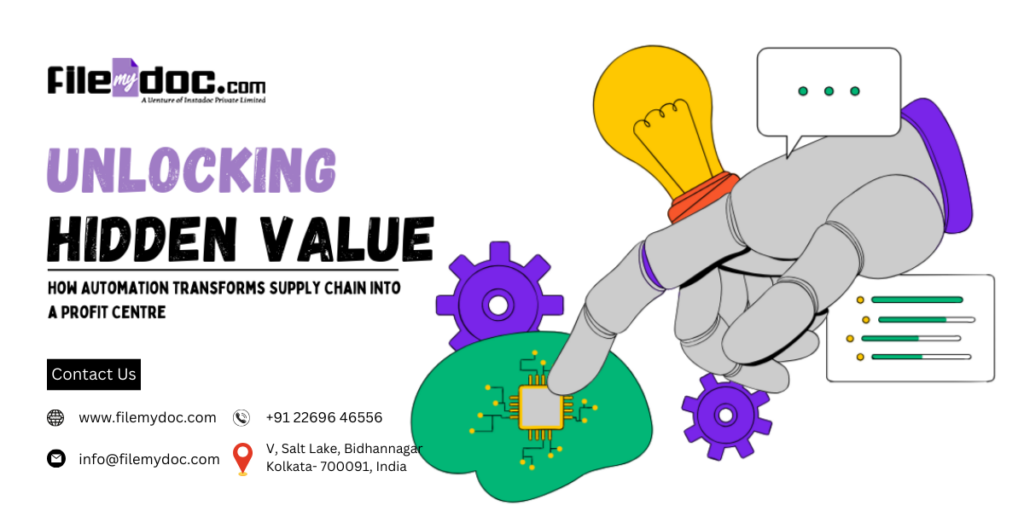Unlocking Hidden Value: How Automation Transforms Supply Chain into a Profit Centre
In today’s competitive business environment, companies are constantly seeking ways to maximize efficiency and reduce costs. One of the most effective strategies is transforming the supply chain from a traditional cost centre into a profit centre through the power of automation. By leveraging advanced technologies, businesses can unlock hidden value within their supply chains, driving profitability and enhancing overall operational performance.




The Traditional Supply Chain vs. Automated Supply Chain
Historically, supply chains have been viewed as necessary but costly components of business operations. These traditional supply chains often involve manual processes, high labor costs, and inefficiencies that can eat into a company’s bottom line. However, with the advent of automation, the role of the supply chain is rapidly evolving.
An automated supply chain utilizes cutting-edge technologies such as artificial intelligence (AI), machine learning (ML), robotics, and the Internet of Things (IoT) to streamline processes, reduce errors, and optimize resource utilization. This shift allows businesses to not only cut costs but also uncover new revenue streams and improve customer satisfaction.
Key Benefits of Supply Chain Automation
- Increased Efficiency and Accuracy: Automation significantly reduces the need for manual intervention, minimizing the risk of human error and speeding up processes. Automated systems can handle tasks such as order processing, inventory management, and demand forecasting with greater precision and speed, leading to more efficient operations.
- Cost Reduction: By automating repetitive tasks, businesses can reduce labor costs and minimize the need for large workforces. Additionally, automation can optimize resource allocation, reducing waste and lowering overall operational costs.
- Enhanced Visibility and Transparency: Automation provides real-time visibility into the supply chain, allowing businesses to monitor every aspect of their operations. This increased transparency enables companies to make informed decisions quickly, respond to changes in demand, and mitigate potential risks.
- Improved Customer Experience: With automation, businesses can ensure faster order fulfillment, accurate deliveries, and better inventory management. These improvements lead to higher customer satisfaction and loyalty, ultimately driving revenue growth.
- Scalability: As businesses grow, their supply chains must adapt to increased demand. Automation enables seamless scalability, allowing companies to expand their operations without significant disruptions or additional costs.
Transforming the Supply Chain into a Profit Centre
To successfully turn the supply chain into a profit centre, businesses must go beyond basic automation and strategically leverage technology to create new value propositions. Here are some steps to consider:
- Data-Driven Decision Making: Automation generates vast amounts of data that can be analyzed to gain insights into supply chain performance. By using data analytics, businesses can identify trends, predict future demand, and make informed decisions that enhance profitability.
- Dynamic Pricing Strategies: Automated supply chains allow for more flexible and dynamic pricing strategies. By adjusting prices based on real-time data, businesses can maximize profit margins and respond quickly to market changes.
- Diversifying Revenue Streams: Automation can uncover new revenue opportunities within the supply chain. For example, businesses can offer value-added services such as expedited shipping or personalized products, creating additional income sources.
- Collaborative Supply Chain Networks: Automation enables better collaboration with suppliers, partners, and customers. By fostering a more connected and responsive supply chain network, businesses can improve efficiency, reduce costs, and create a more resilient supply chain.
- Sustainability Initiatives: Automation can also support sustainability efforts by optimizing resource use, reducing waste, and minimizing the environmental impact of supply chain operations. This not only enhances profitability but also strengthens the company’s brand reputation.
The Future of Supply Chain Automation
As technology continues to advance, the potential for supply chain automation will only grow. Emerging technologies such as blockchain, advanced robotics, and autonomous vehicles are set to revolutionize supply chain management, offering even greater opportunities for businesses to transform their supply chains into profit centres.
However, the key to success lies in the strategic implementation of these technologies. Businesses must carefully assess their specific needs, invest in the right tools, and ensure that their workforce is equipped with the necessary skills to manage and optimize automated systems.
Conclusion
Automation is no longer just a tool for improving efficiency—it’s a powerful driver of profitability. By transforming the supply chain into a profit centre, businesses can unlock hidden value, reduce costs, and enhance their competitive edge. The journey towards an automated supply chain requires careful planning and strategic investment, but the rewards are well worth the effort. As businesses continue to embrace automation, those that successfully integrate these technologies into their supply chains will be better positioned to thrive in the rapidly evolving market landscape.






















